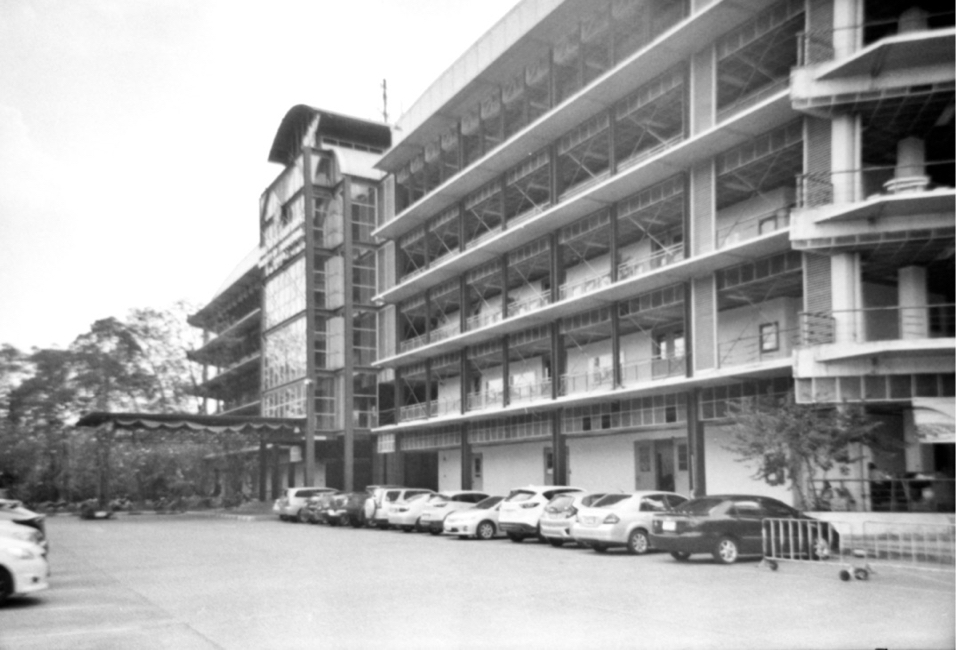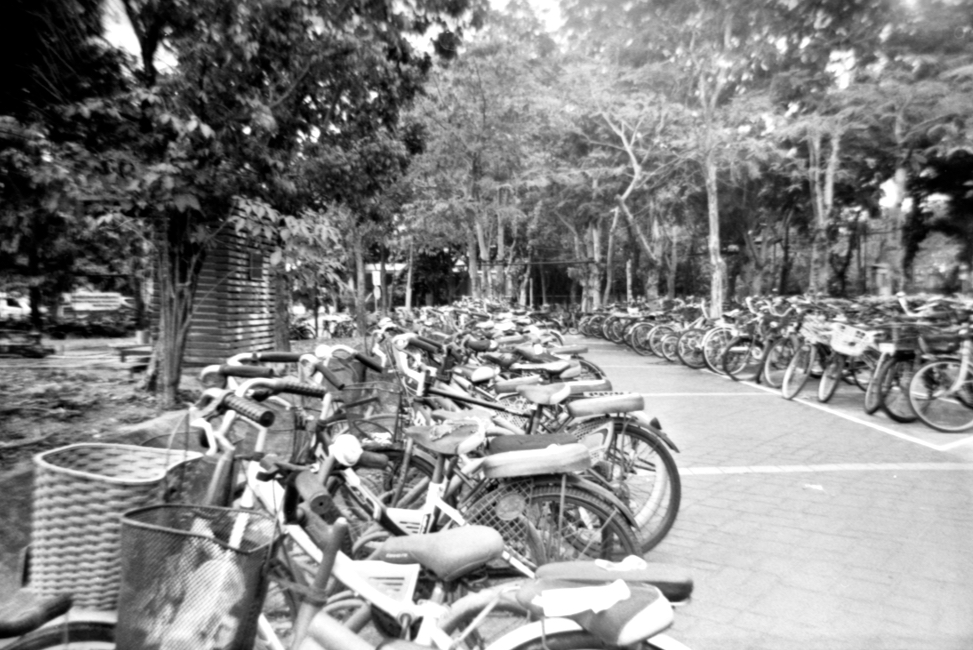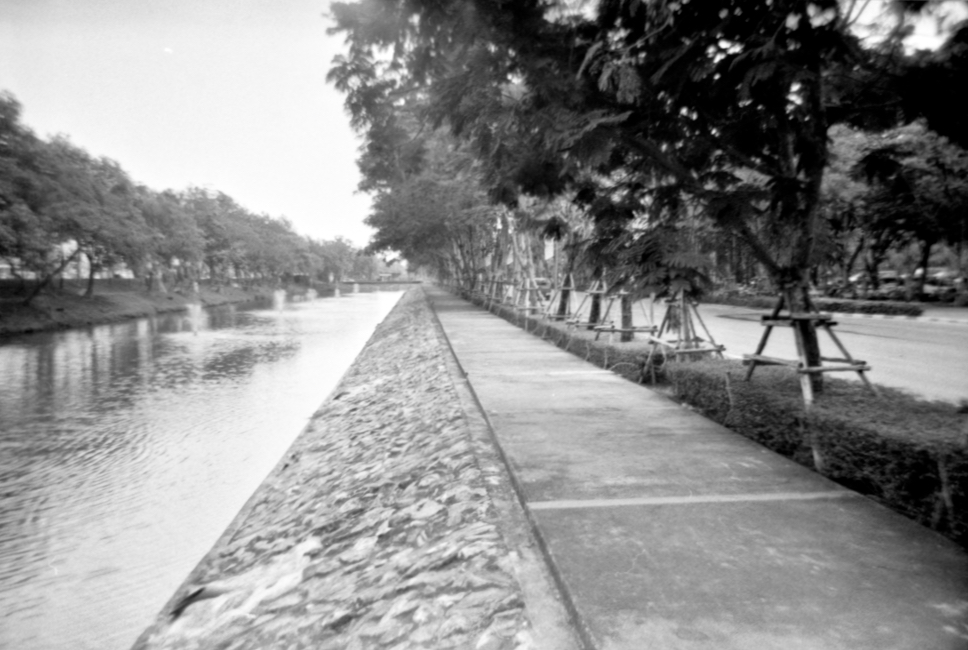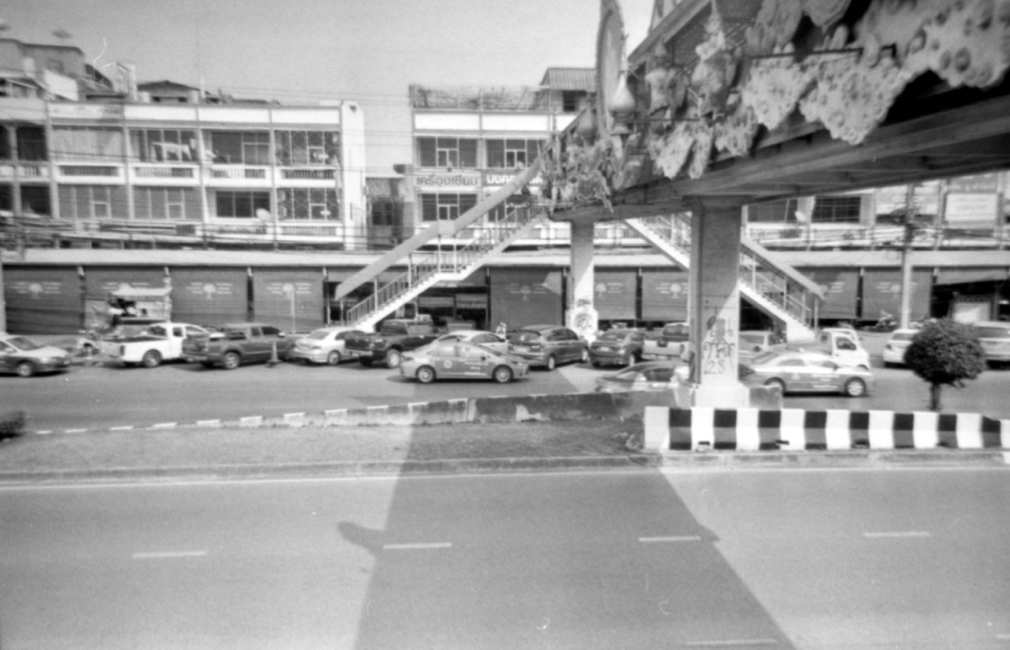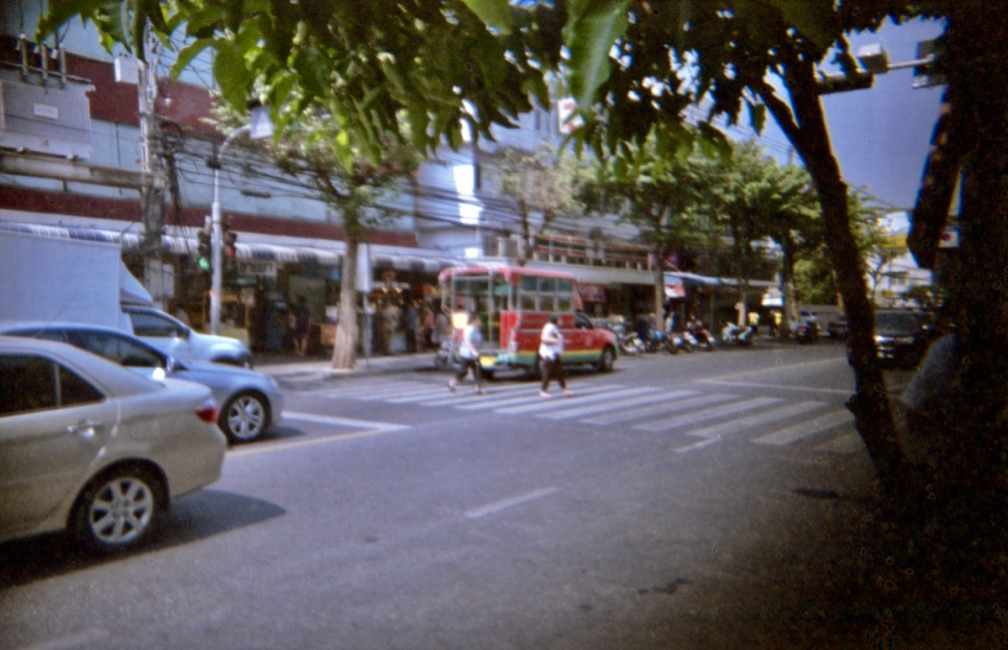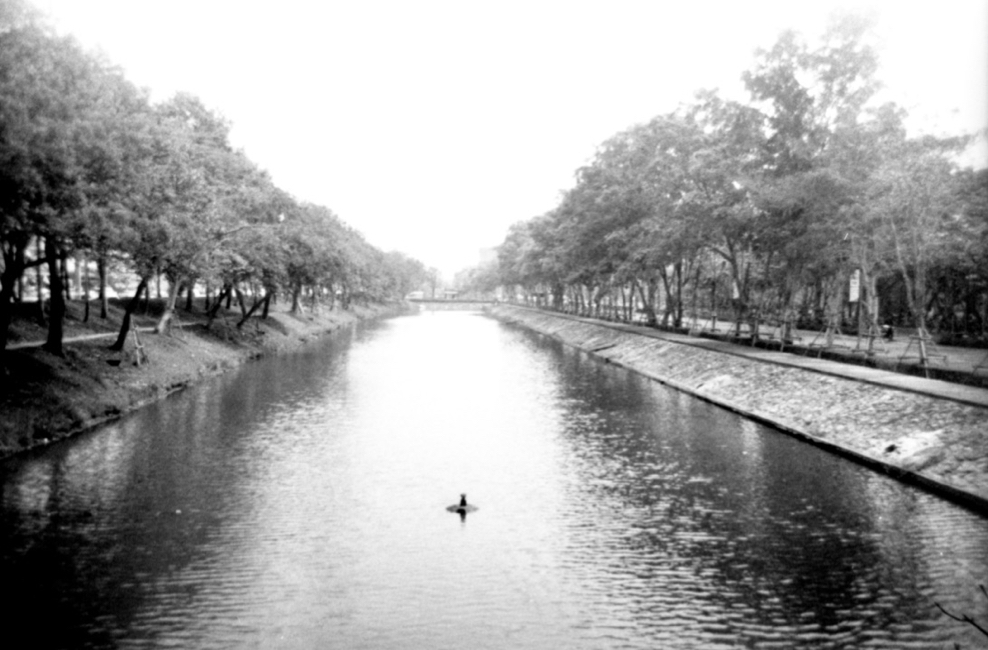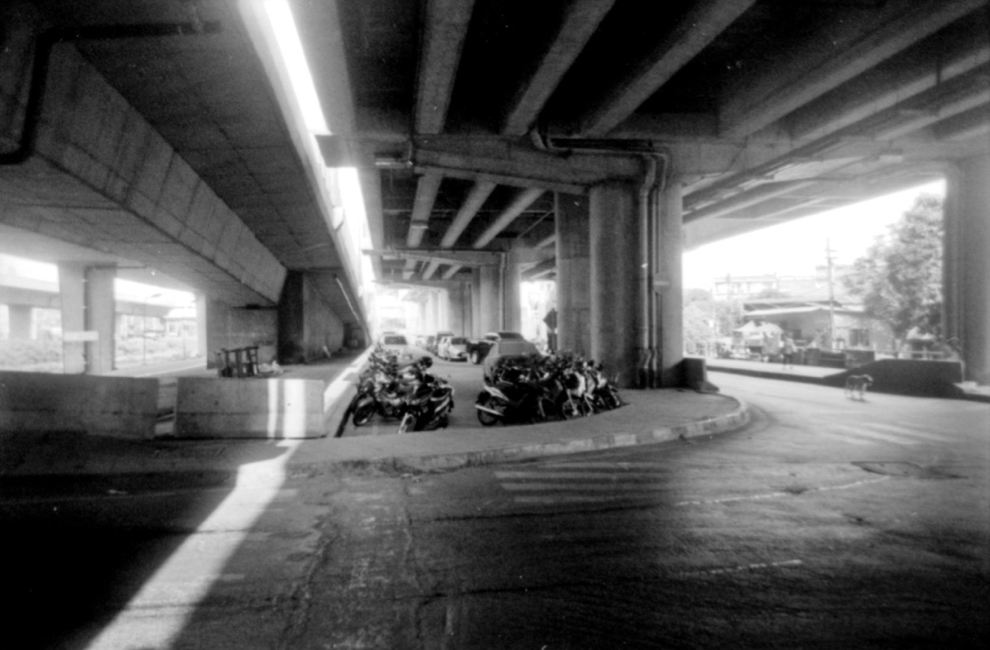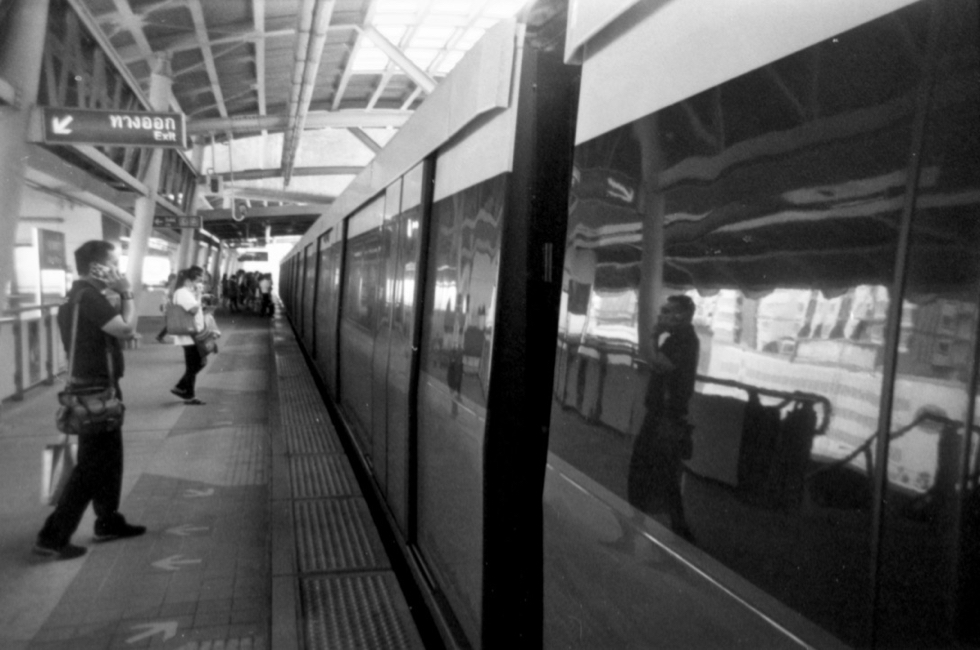|
|
Harman Disposable and Reusable Cameras in Bangkok: Ilford and Kentmere FilmBy Graham K. Rogers
When looking at online ordering sites, had seen that Ilford also made a couple of Harman disposable cameras: with Ilford XP2 400, and HP5 Plus 400. The former uses C41 processing so can be handled by labs that do color processing. In central Bangkok a couple of the malls have reasonable camera shops. I tend to use one of these, but when I mislaid a lens protector I had to visit another camera store (Zoom Camera) where I saw the Harman disposable camera with XP2 400, along with a Harman reusable camera that comes with 2 rolls of Kentmere 400 film.
Harman Reusable camera with Kentmere films and Harman Disposable camera with XP2 film
While confirming the price on the site more recently, I saw that Ilford Ortho is now available, so ordered some, along with a refill of Bergger Pancro. It was also announced the following day (1 April) that Ilford is shutting down production temporarily with the risks to its staff from the Coronovirus. I wish them well and look forward to a resumption for them and any manufacturers faced with the same problems in these difficult times. I had mixed results with the three cameras and some of that must be down to me, with the best output from the disposable camera with HP5 film. I was deliberately careless taking shots, telling myself that the market for these devices is not aimed at professional use, but at children or one-off events, like a party or (say) a trip to the beach when users are likely to take a little less care with framing a shot. Exposure, aperture and focus of all three cameras are not adjustable, so this is very much a point and shoot exercise. I also had to remind myself that the cameras and lenses I use are somewhat more expensive than these starter kits.
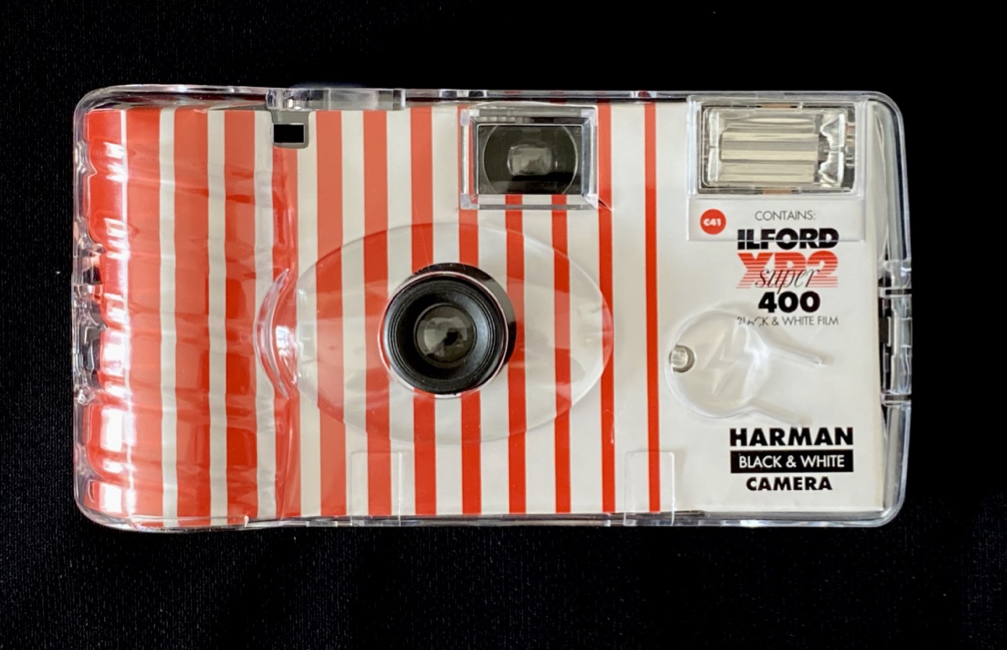 Harman Disposable camera with XP2 film
Harman disposable camera with XP2 400The first of the cameras I tried has the Ilford XP2 film and the camera is decked in the same red and white colors as the film rolls. This gives the device a rather stunning look, particularly compared to the subdued green and white of HP5 Plus and the dour black of the reusable Harmon camera: that cries out for colour. The disposable body is enveloped in clear plastic, which is not so easy to open when the roll is finished. I did this later with a small screwdriver.In the camera, the film is already unrolled. Winding on when each photograph is taken returns it to a standard 35mm cassette. The camera has 27 shots on a roll which I did not find restrictive: when I used 35mm in the 1990s I would always buy rolls of 24 rather than 36. There was a nifty economy with the flash system which was operated by pressing a button on the front when taking a photo once the flash had been charged by the capacitor. On the disposable camera the flash operates automatically like a SLR camera. Of course, the disposable camera uses a battery (AAA) to charge the flash and that must also be disposed of, along with circuits, plastic container and lens system.
Output from Harman Disposable camera with XP2 film
The specifications sheet adds that the camera is focus-free and can take pictures from 3m to infinity: a typical easy to use, point and shoot, except that it is loaded with a roll of black and white film.
Output from Harman Disposable camera with XP2 film
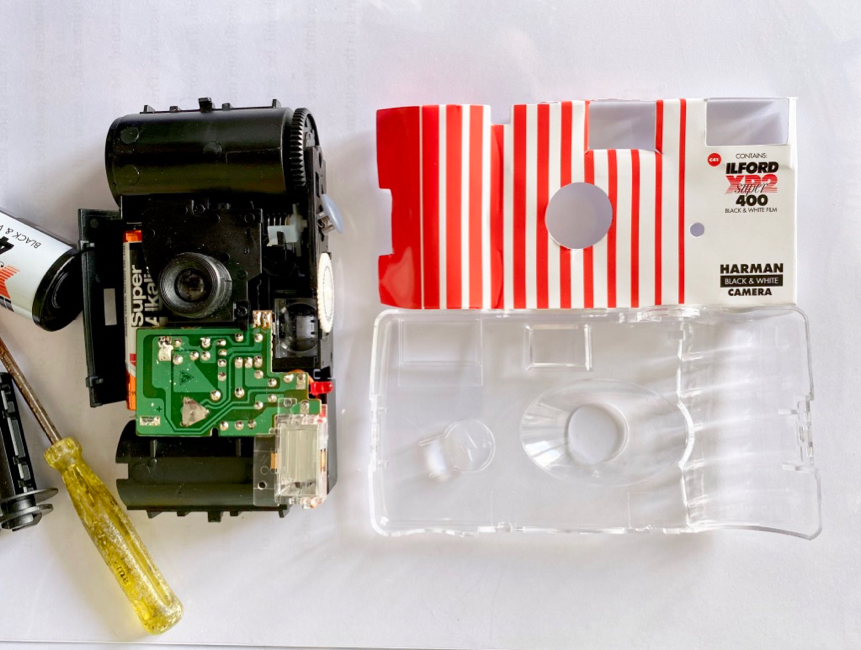 Disassembled Harman camera
When I took the film for processing, there was the normal banter about black and white, but the assistant spotted the C41 label immediately. The process adds a dye to the negative (Kodak is orange, Ilford mauve). I had forgotten about this, so when scanning using black and white settings, the results were not the best. I did try to scan one or two as color, but I am unsure of the right setting to use. Perhaps using black and white filtering in editing would tidy this up. Most of the scans were not as clear or sharp as I usually see with my medium format output, although that is understandable. Some heavy editing brought out the potential in some shots, although many could not be saved and this was clearly user error. In the end, 8 from the roll were acceptable, with 3 more showing some potential. There were no prize winners. Processed by the shop and printed small, these may have looked better.
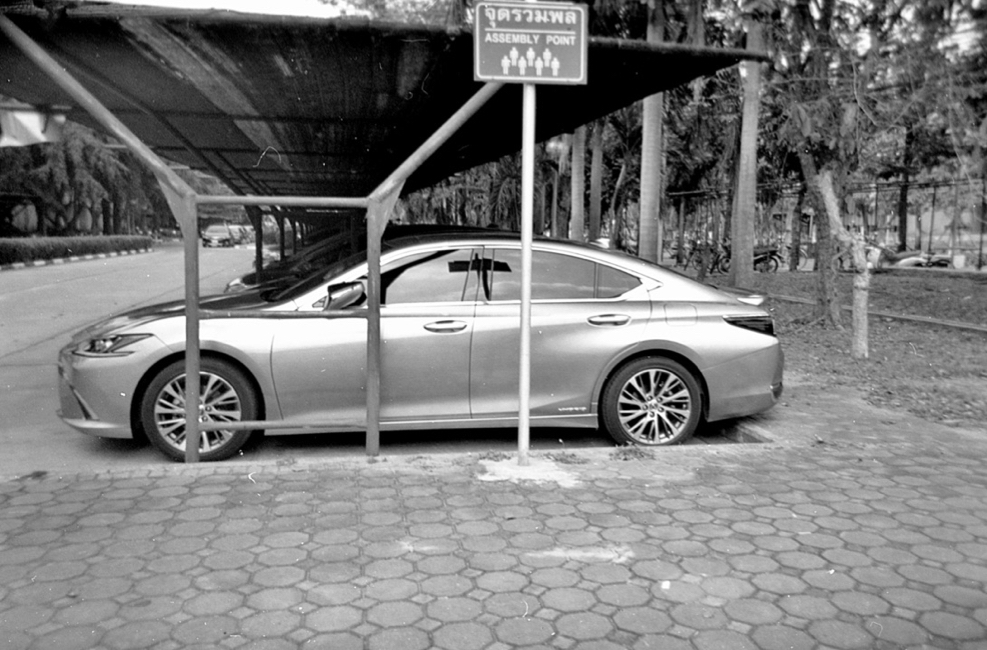 Output from Harman Disposable camera with XP2 film
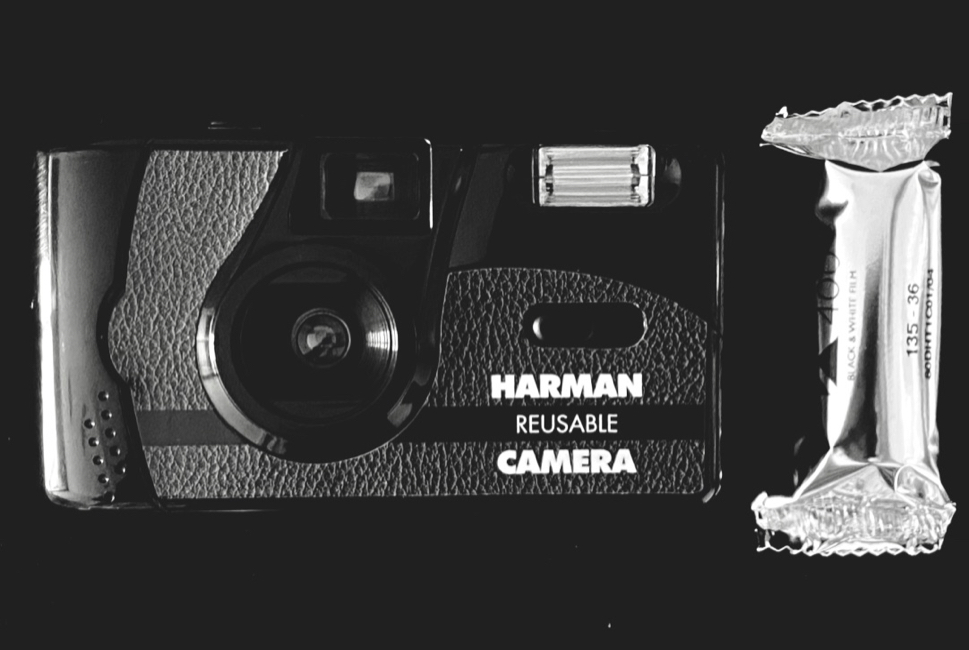 Harman Reusable camera with Kentmere film
Harman Reusable Camera with Kentmere 400The Harman reusable camera was better in environmental terms, although has a plastic body and the packaging was wrapped in plastic. Its design was a straightforward rectangular box with a simple winder wheel on the right and a rewind wheel on the left. As is normal, a hinged panel with a locking button on the left side opened for loading the film. This was all quite unremarkable making it quick and easy to learn.
Output from Harman Reusable camera with Kentmere 400 film
I ran a utility on the iPhone which showed that in late morning light here, at F10 with 400 film, the shutter speed is 1/1250, so the conditions I work in may not be optimal for the camera.
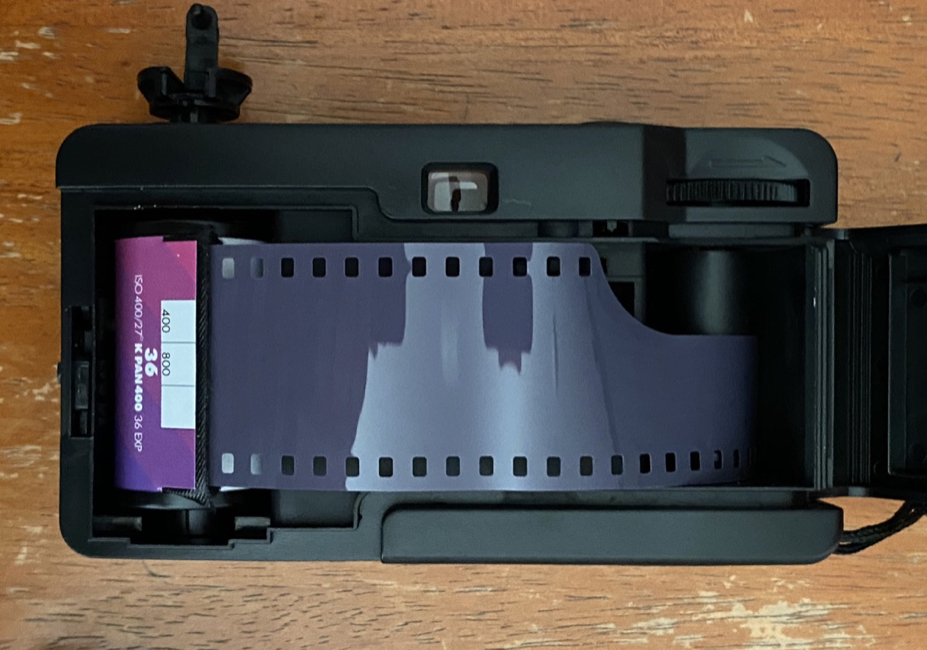 Harman Reusable camera with Kentmere film
Output from Harman Reusable camera with Kentmere 400 film
After I had used the first roll of Kentmere, I bought a roll of Fujicolor 400. There was an odd reaction when I dropped this off for developing as the staff in the shop had only ever seen me use B&W film before. The negatives looked reasonable at first glance, with one or two blank frames although after scanning, results were not high quality. As with the other films I had run though the roll quickly and expected this. I do take more time usually with my other cameras.
Output from Harman Reusable camera with Fuji 400 film
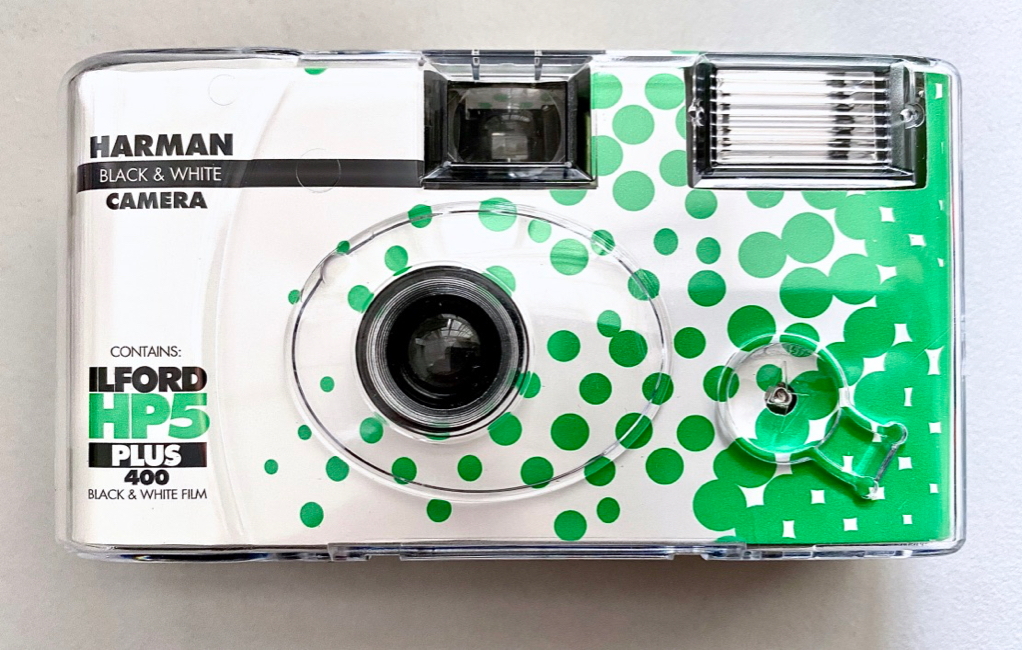 Harman Disposable camera with HP5 Plus film
Harman disposable camera with HP5 Plus 400After I had been using the first reusable camera and the disposable camera I went back to the shop and asked about the disposable camera with HP 5+ film. They did not carry this. As I was about to buy some film anyway from CameraFilmPhoto in Hong Kong I tagged one of these onto the order for a cost of $12.80
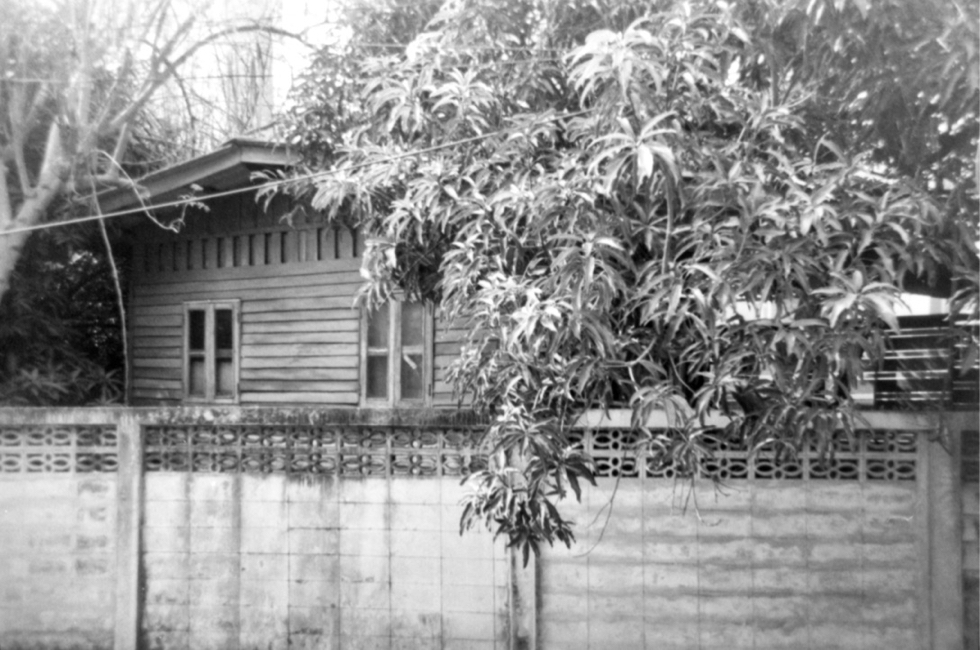 Output from Harman Disposable camera using HP5 Plus film
Output from Harman Disposable camera Using HP5 Plus film
Output from Harman Disposable camera Using HP5 Plus film
Closing RemarksThe cameras each have a slightly different market, but the use of plastic in this environmentally conscious age does raise some questions. That said, looking online and in stores, there are scores more disposable and reusable plastic cameras from several other manufacturers.Film itself has plastic backing, and the chemicals used in creating films, then later developing the output, may all cause problems. Not that digital cameras are environmentally friendly with their electronic components, rare earths and other parts that have to be dug out of the ground, manufactured and later disposed of. With the increased awareness that we have these days, those responsible for handling the chemicals and other items may be able to dispose of them properly, although I note that in 19th Century London, the Metropolitan Engineers wanted toxic heavy metals (e.g mercury) to be dumped into the sewage system as there were proper process for their disposal at the works (Beckton and Crossness). Other cities may not have suitable disposal mechanisms.
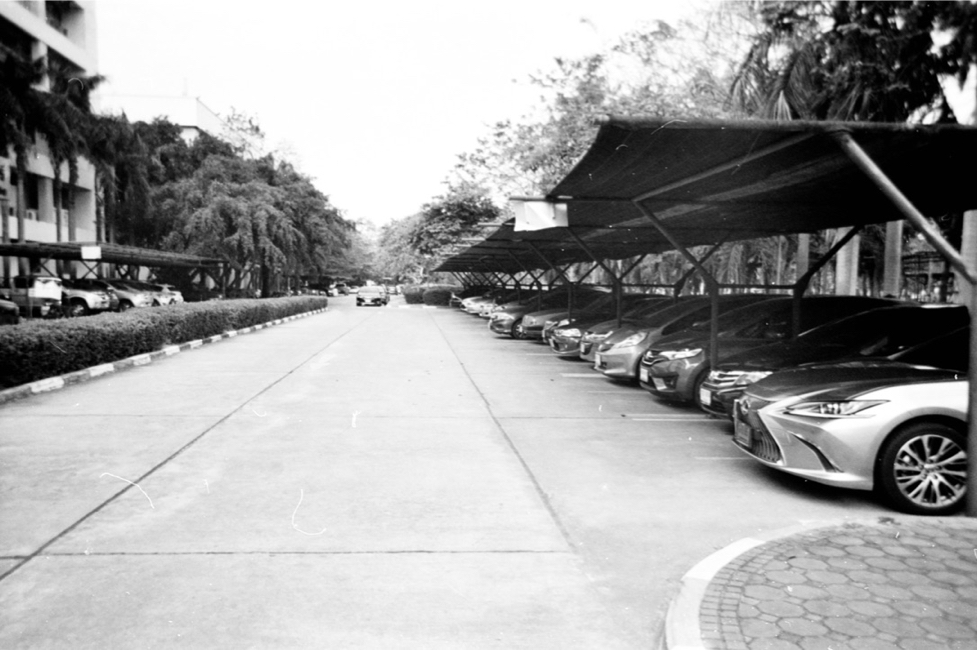 Output from Harman Disposable camera using XP2 film
I see many young people now thinking of film; but they are wary of the cost of a used camera. There are only a couple of film cameras still being made new, and the used market has woken up, although like many businesses, current world problems are causing fluctuations in pricing. Many young people are unable to buy such cameras and the idea of a disposable or usable camera is attractive, either for recording a specific event, or to try out the medium of film. These are a good way to start.
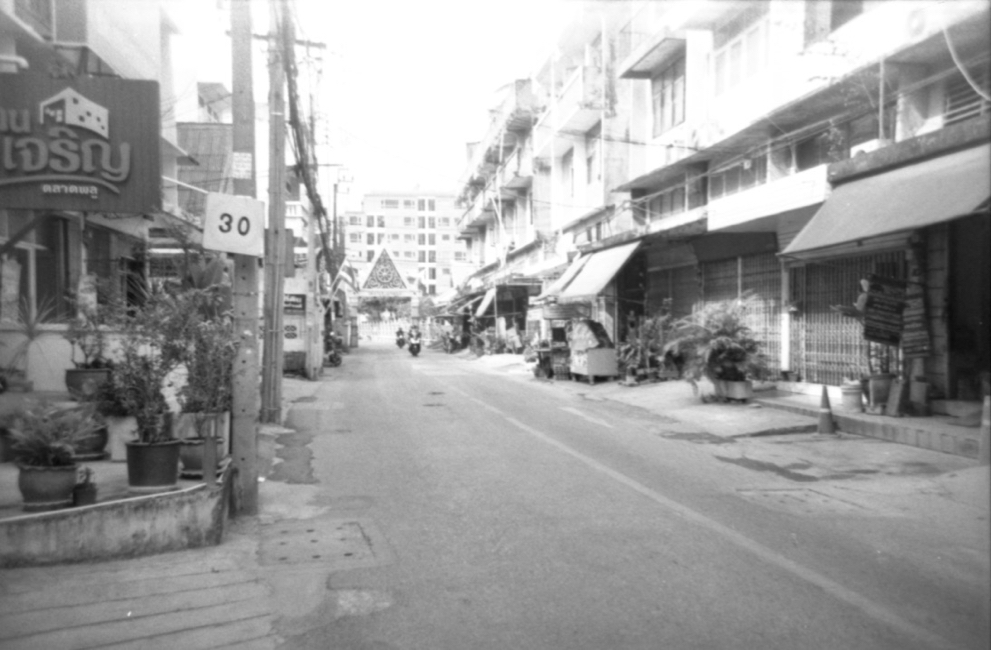 Output from Harman Disposable camera using HP5 Plus film
Graham K. Rogers teaches at the Faculty of Engineering, Mahidol University in Thailand. He wrote in the Bangkok Post, Database supplement on IT subjects. For the last seven years of Database he wrote a column on Apple and Macs. After 3 years writing a column in the Life supplement, he is now no longer associated with the Bangkok Post. He can be followed on Twitter (@extensions_th) |
|

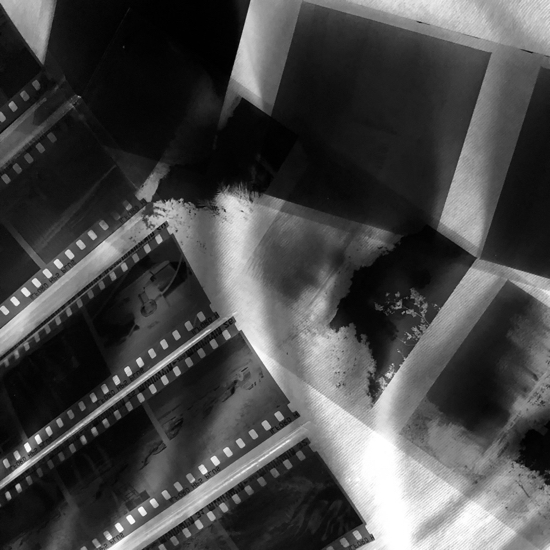
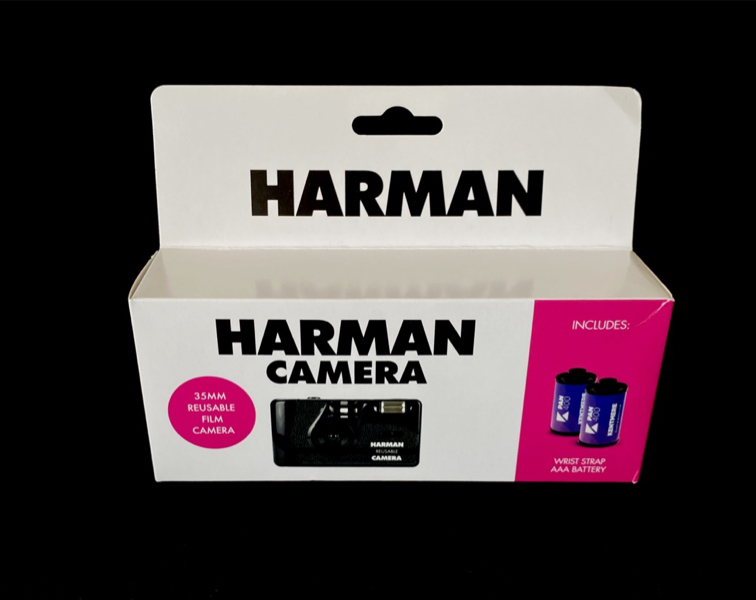
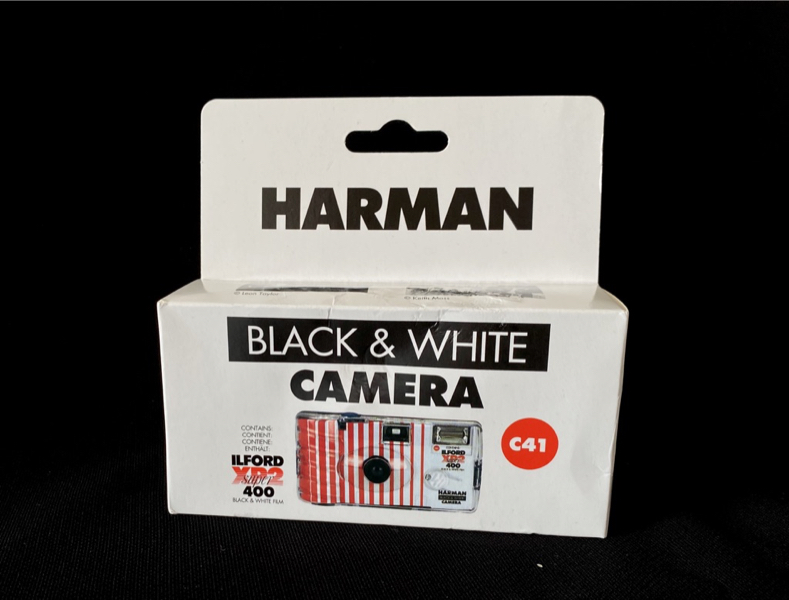
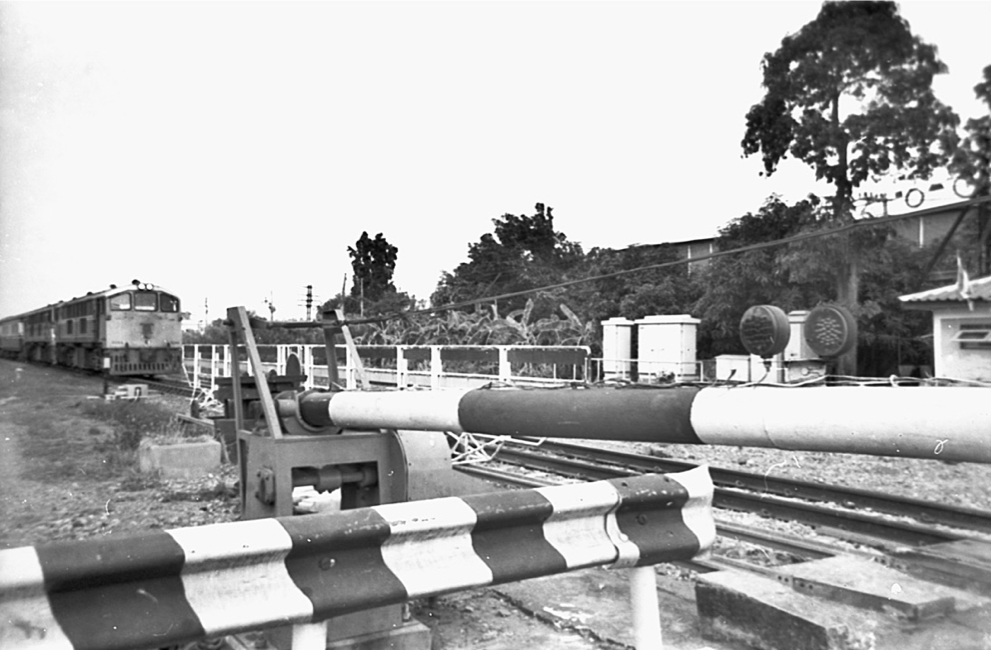
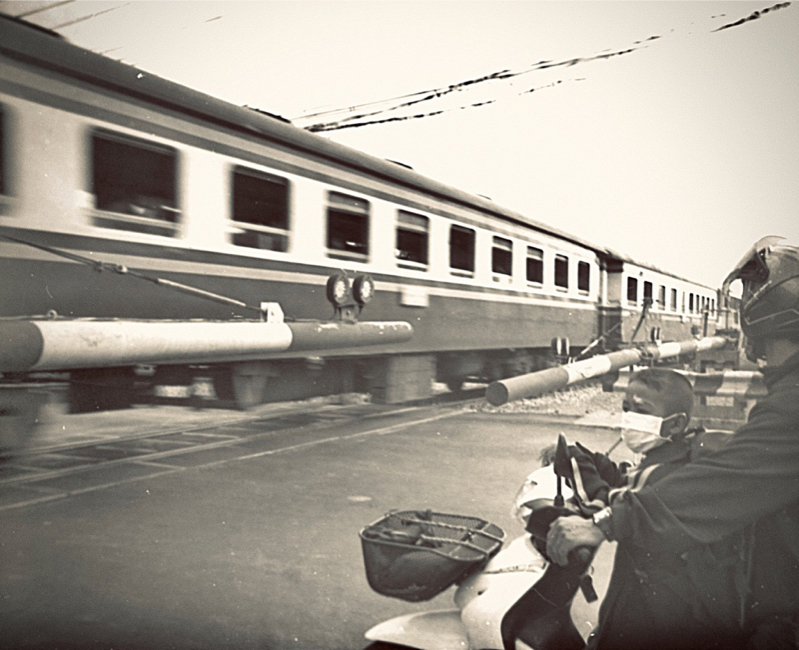


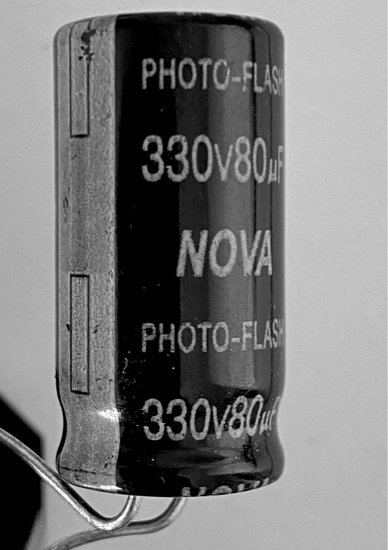 The Department technician reminded me to remove the battery as the capacitor could still deliver a hefty voltage if mishandled.
The Department technician reminded me to remove the battery as the capacitor could still deliver a hefty voltage if mishandled.
